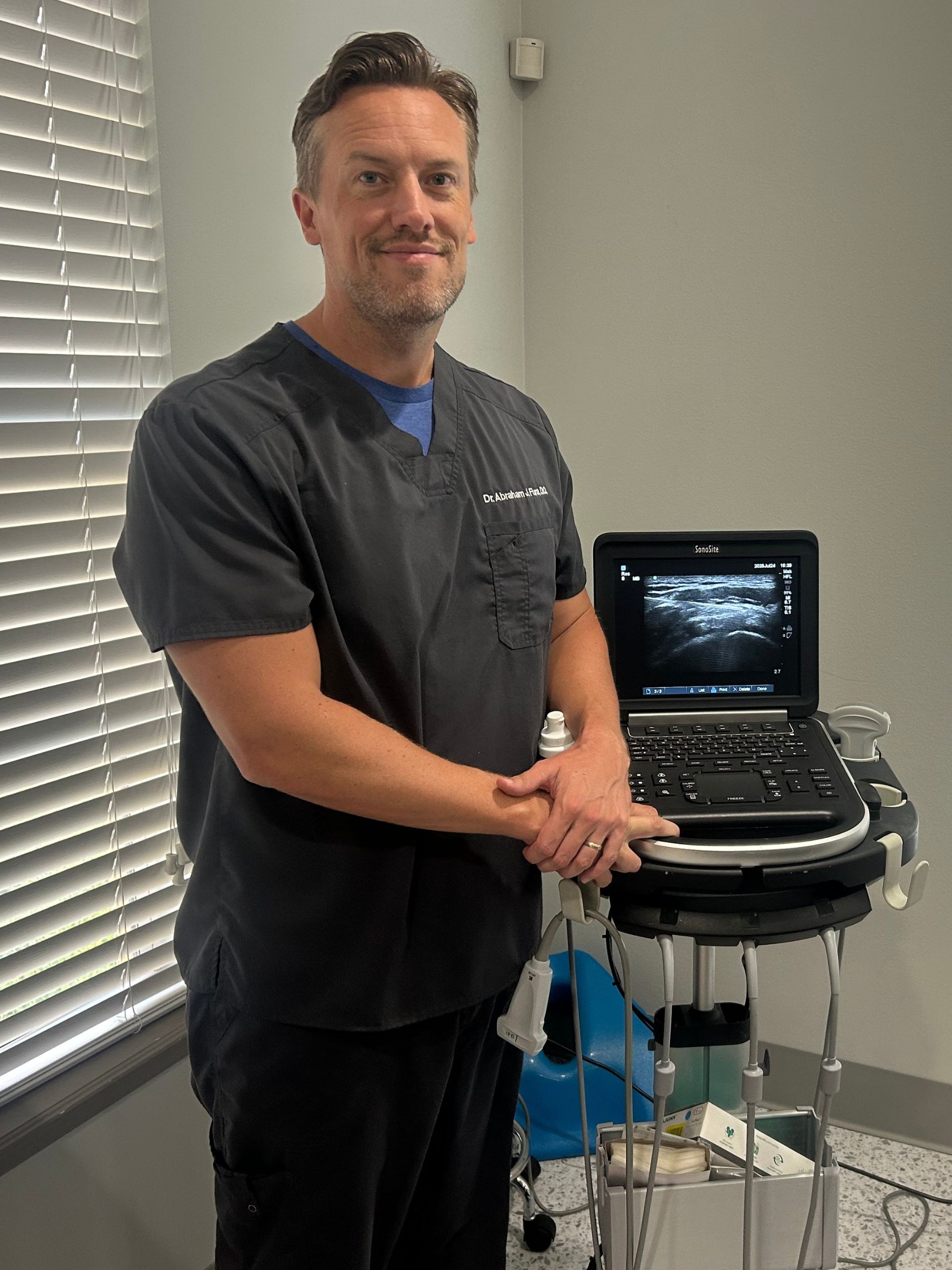
CONDITION OVERVIEW
Degenerative Joint Disease (DJD) is the medical term for the progressive breakdown of joint cartilage, most commonly known as **osteoarthritis**. This "wear-and-tear" process occurs when the smooth, protective cartilage that cushions your joints gradually deteriorates, leading to pain, stiffness, and inflammation. While DJD is a natural part of aging and can affect any joint, it most frequently impacts the spine, hips, and knees. Although the degeneration itself cannot be reversed, a comprehensive treatment plan can effectively manage your symptoms and restore your active lifestyle.

DRIVING FACTORS
Degenerative Joint Disease is a process where joint cartilage breaks down over time. While aging is the main driver, several other factors can accelerate this wear and tear.
The primary factor. Over decades of use, the cartilage in our joints naturally loses its resilience and ability to repair itself, leading to gradual degeneration.
A significant past injury to a joint, such as a fracture or major ligament tear, can disrupt the joint surface and lead to accelerated, post-traumatic degeneration.
Repetitive, high-impact activities or occupations that place heavy loads on specific joints can speed up the wear-and-tear process.
Your genetic makeup can predispose you to faster cartilage breakdown. Additionally, factors like obesity place immense extra stress on weight-bearing joints.

RECOGNIZING THE SIGNS
Symptoms of Degenerative Joint Disease typically begin gradually and worsen over time. The pain and stiffness are often localized to the specific joints affected by the condition.
An ache in the affected joint that is often worse during or after movement and tends to feel better with rest.
Stiffness is most noticeable upon waking or after long periods of inactivity. It usually improves once you get moving.
A progressive loss of flexibility in the joint, making it difficult to perform tasks like fully bending your knee or looking over your shoulder.
The joint may be tender to the touch, especially when light pressure is applied to the joint line or surrounding tissues.
A grating, crunching, or crackling sound or sensation when you move the joint, caused by the rubbing of damaged cartilage.
The formation of hard, bony lumps around the affected joint as the body tries to stabilize it. These can cause further pain and restrict movement.
The persistent ache of Degenerative Joint Disease can make you feel older than you are, but you don't have to accept it as an inevitable part of aging. Modern treatments can effectively manage your pain and restore function, helping you stay active. Contact us to learn about a personalized plan for your joint pain.